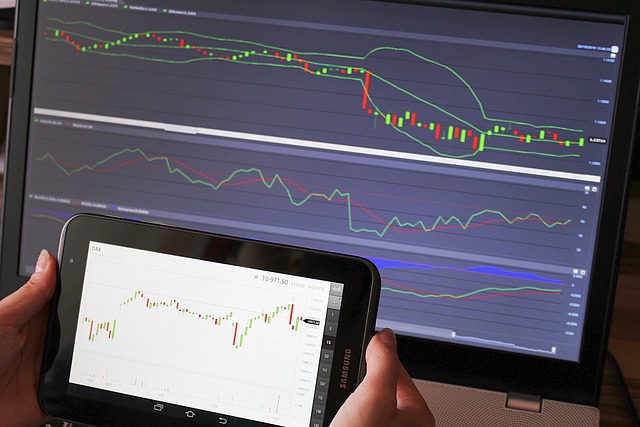Understanding Trading Signals: A Comprehensive Guide for Investors
Author: Jameson Richman Expert
Published On: 2024-09-09
Prepared by Jameson Richman and our team of experts with over a decade of experience in cryptocurrency and digital asset analysis. Learn more about us.
In today's fast-paced financial markets, trading signals play a crucial role in the decision-making process for traders and investors alike. These signals provide insights into potential market movements, enabling traders to make more informed choices. In this article, we will delve deep into what trading signals are, how they work, their types, advantages and disadvantages, and much more. Join us on this detailed journey as we explore the world of trading signals.

What Are Trading Signals?
Trading signals are indicators or prompts that suggest potential buying or selling opportunities in financial markets. They can be generated through various means, including technical analysis, fundamental analysis, or automated trading algorithms. Trading signals can be as simple as an observation of price trends or involve complex calculations based on a multitude of factors.
Types of Trading Signals
Trading signals can broadly be classified into several categories:
1. Technical Trading Signals
These signals are derived from technical analysis, which involves studying price charts and patterns. Common technical indicators include:
- Moving Averages
- Relative Strength Index (RSI)
- Bollinger Bands
- Fibonacci Retracements
In my opinion, technical trading signals are valuable for traders who prefer a systematic approach to trading. They allow for the incorporation of historical price data into emerging market trends.
2. Fundamental Trading Signals
These signals are based on the analysis of economic data, company earnings, news events, and market sentiment. For example:
- Earnings Reports
- Economic Indicators (GDP, Unemployment Rate)
- Geopolitical Events (Elections, Trade Wars)
It is my belief that fundamental trading signals, while potentially more volatile, can provide deeper insights into long-term investment opportunities than technical signals alone.
3. Automated Trading Signals
With technological advancements, many traders now rely on algorithmic trading systems. These systems generate signals based on programmed criteria, often handling trades automatically. They can involve a combination of both technical and fundamental analysis.
4. Social Trading Signals
This relatively new approach revolves around sharing signals among traders via social media platforms or trading forums. Investors can observe the trading decisions of others and replicate their strategies based on perceived success.
While social trading signals may offer convenience, I encourage caution, as they can encourage herd mentality and lead to poor trading decisions if not approached thoughtfully.
How to Interpret Trading Signals
Interpreting trading signals correctly is crucial to successful trading. Here are some key considerations:
- Understand the Source: Always verify the credibility of the source providing the signal.
- Backtest Signals: Historical analysis of signals can provide insights into their effectiveness.
- Risk Management: Pair signals with appropriate risk management strategies to protect your capital.
- Stay Informed: Continuous learning about market trends and changes in economic indicators is essential for interpreting signals accurately.
In my opinion, educating oneself on the nuances of the financial markets can significantly improve one's ability to interpret trading signals accurately and effectively.
The Advantages of Using Trading Signals
Trading signals provide several benefits for both novice and experienced traders, including:
- Enhanced Decision-Making: Signals provide clarity in an otherwise cluttered market, helping traders make informed choices.
- Time-Saving: Automated signals can save traders hours of analysis while still offering lucrative opportunities.
- Access to Expertise: Many signal providers offer insights based on extensive market knowledge, which can be particularly useful for less experienced traders.
I believe that utilizing trading signals can be a step toward democratizing market access, enabling retail traders to compete more effectively with institutional players.

The Disadvantages of Using Trading Signals
However, trading signals are not without their drawbacks:
- Over-Reliance: Some traders may become overly reliant on signals, ignoring personal judgment and analysis.
- False Signals: Not all signals are accurate; traders may experience loss due to incorrect or poorly tested signals.
- Costs: Many reliable signal providers charge fees, which can take a bite out of profits.
In my experience, understanding both the advantages and disadvantages of trading signals is vital for developing a balanced trading strategy. They should be viewed as one of several tools in a trader’s toolbox, not the sole determinant of success.
Best Practices for Using Trading Signals
To maximize the effectiveness of trading signals, consider these best practices:
1. Diversify Signal Sources
Relying on a single source for signals may lead to bias and missed opportunities. Diversifying your signal sources can provide a broader perspective on market conditions.
2. Combine Signals with Your Strategy
Instead of treating signals as stand-alone recommendations, integrate them into your overall trading strategy. This holistic approach can aid in fostering more robust decision-making.
3. Continual Learning and Adaptation
The trading landscape is continually evolving. Engaging in ongoing education helps traders adjust their strategies and make sense of new signals as they emerge.
4. Keep a Trading Journal
Maintaining a trading journal can help you track the performance of signals and your responses to them. This reflective practice aids in identifying patterns and improving strategies.
From my perspective, these best practices can significantly enhance a trader's ability to leverage signals effectively and cultivate a more disciplined approach to trading.
The Future of Trading Signals
As technology continues to advance, trading signals are bound to evolve as well. Several trends are currently reshaping the landscape:
1. Artificial Intelligence and Machine Learning
AI is becoming increasingly prevalent in the world of trading signals. Algorithms can analyze massive datasets and identify patterns independent of human oversight, potentially leading to more accurate signals.
2. Increased Accessibility
The proliferation of trading apps and platforms means that trading signals are more accessible to average investors than ever before. This democratization of information is set to shake up traditional trading norms.
3. Enhanced Social Trading Platforms
Social trading is likely to grow, with platforms developing to facilitate better communication among traders. This evolution may contribute to more community-based strategies and shared insights.
In my view, these trends not only signify the dynamic nature of financial markets but also indicate a shift toward more informed and collaborative trading, which can foster a healthier trading culture among participants.

Conclusion
In summation, trading signals serve as valuable tools for traders and investors seeking an edge in the intricacies of financial markets. While they offer various advantages, potential pitfalls exist that require careful consideration. By understanding the types of signals, interpreting them effectively, and integrating them into a comprehensive trading strategy, individuals can enhance their decision-making processes. As the landscape continues to evolve, remaining adaptable and informed will be key to harnessing the power of trading signals successfully.
Ultimately, responsible use of trading signals—coupled with ongoing education and personal judgment—can lead to smarter, more strategic trading. As we navigate this intricate world, a balanced approach might just be the key to unlocking long-term success.